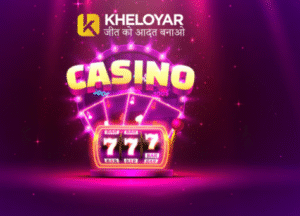
The crypto space has matured far beyond simple trading and token speculation. One of the most compelling evolutions in recent years is the explosive rise of blockchain gaming—often referred to as GameFi. Combining play-to-earn mechanics with decentralized ownership models, Web3 games are not only attracting mainstream gamers, but they’re also redefining how value is created and exchanged in virtual environments.
Security remains a major concern in this expanding ecosystem. Players now invest real money into assets like NFTs and tokens that can hold significant value. As a result, choosing the safest crypto wallet becomes an essential part of the gaming experience especially for users managing assets across multiple games and blockchains. A secure wallet acts as a gateway to these virtual economies, allowing players to store and trade in-game assets without exposing themselves to unnecessary risk.
Web3 Gaming: From Trend to Transformation
The rise of blockchain gaming has been anything but accidental. Fueled by increasing dissatisfaction with centralized game publishers, players began gravitating toward games that offer actual ownership over in-game items and currencies. In traditional games, skins, weapons, and currencies remain locked within centralized servers. In contrast, Web3 games grant players true ownership via NFTs and native tokens that can be freely traded or used across ecosystems.
This shift is reshaping not just how games are played, but how they are funded and developed. Many Web3 titles adopt community-governed development models, where token holders can vote on updates and features. Others offer play-to-earn (P2E) systems that reward players financially for their time and contributions. Though the initial hype around P2E has cooled from its 2021 peak, the industry is finding more sustainable models that balance gameplay with economics.
2025 Market Trends: What’s Driving Growth?
In 2025, the blockchain gaming industry is experiencing renewed momentum driven by key market trends:
1. Multichain Gaming Platforms
New platforms are emerging that enable developers to build games compatible with multiple blockchains. This increases user access and allows for cross-chain gameplay, creating more dynamic, interconnected economies. Players can bring their NFTs or tokens from one game into another, expanding their utility and value.
2. Real Yield Integration
GameFi projects are integrating DeFi mechanisms that allow players to stake in-game tokens for passive income or gain governance rights. This “real yield” model shifts away from unsustainable inflationary rewards and provides more meaningful, long-term engagement opportunities.
3. AI in Game Design
AI-generated environments, NPCs, and quests are now standard in some high-profile Web3 games. These dynamic experiences are more personalized, allowing for deeper engagement and replayability while reducing developer overhead.
4. Mobile-First GameFi Adoption
The majority of Web3 gaming growth is coming from emerging markets where mobile devices are the primary computing platform. Lightweight, mobile-first Web3 games are gaining popularity, particularly in Southeast Asia, Latin America, and Africa—markets traditionally underserved by major game publishers.
Security in the Web3 Gaming Ecosystem
While the opportunities are exciting, security risks remain one of the biggest obstacles to mainstream adoption. Here are some of the most pressing challenges in crypto gaming today:
1. Phishing and Wallet Exploits
Scams targeting players through fake in-game airdrops or malicious smart contracts are becoming more sophisticated. Many of these exploits occur at the wallet level, making secure key management and transaction signing critical.
2. In-Game Asset Theft
Because NFTs and tokens hold real-world value, they are prime targets for theft. A compromised account can mean permanent loss of expensive in-game assets. As a result, many players are turning to multisig wallets or using cold storage for their most valuable assets.
3. Smart Contract Vulnerabilities
Game economies often rely on complex smart contracts for minting items, distributing rewards, and handling transactions. If not properly audited, these contracts can be exploited—resulting in broken economies or drained treasuries.
Case Study: Starborne Frontiers and Sustainable GameFi
One standout title in 2025 is Starborne Frontiers, a strategy-based NFT game that successfully moved away from a purely P2E model. Instead of unlimited token emissions, it rewards players with tradable NFTs and revenue-sharing rights based on skill, commitment, and ecosystem participation. The game also integrates DAO-based governance, letting token holders vote on new expansions and features.
Importantly, Starborne places strong emphasis on wallet security. It requires two-step authentication for major transactions and encourages hardware wallet connections to protect high-value assets. This approach reflects a broader industry trend toward prioritizing user security without sacrificing accessibility.
Opportunities Beyond Gaming
Web3 games are more than just entertainment. They’re becoming entry points into the broader crypto ecosystem for millions of users. Games introduce people to wallets, NFTs, and token economics in a low-barrier, engaging way. As users gain experience through gaming, they often expand into DeFi, governance, and DAO participation—contributing to broader ecosystem growth.
Moreover, some Web3 games are experimenting with educational models where gameplay teaches users about blockchain, finance, or coding. This blend of entertainment and learning could play a key role in onboarding the next generation of crypto users.
Looking Ahead: The Future of Blockchain Gaming
The future of blockchain gaming is far from certain, but the direction is clear. Quality and security are replacing hype and speculation. Developers are focusing on sustainable economies, rich gameplay, and frictionless onboarding. Meanwhile, infrastructure improvements—including L2 scalability, wallet usability, and cross-chain compatibility—are making these games more accessible than ever.
In 2025 and beyond, we can expect to see:
-
Greater interoperability between games and chains
-
Regulatory clarity in key jurisdictions
-
Deeper partnerships between traditional gaming studios and Web3 platforms
-
AI-powered moderation and matchmaking
-
Gamified DAO governance structures
Final Thoughts
Blockchain gaming is no longer a fringe experiment—it’s a vital part of the Web3 revolution. As more users migrate from traditional gaming into crypto-powered ecosystems, the importance of robust infrastructure, including secure wallets, intuitive interfaces, and scalable networks, becomes undeniable.
Whether you’re a casual gamer dipping your toes into NFTs or a serious player building wealth through gameplay, understanding the risks and rewards of this space is crucial. The decentralized gaming frontier offers real opportunities, but only to those who navigate it with awareness, curiosity, and caution.




